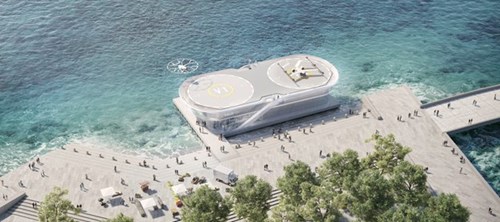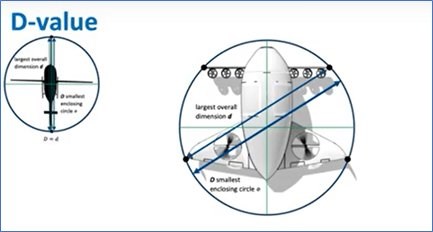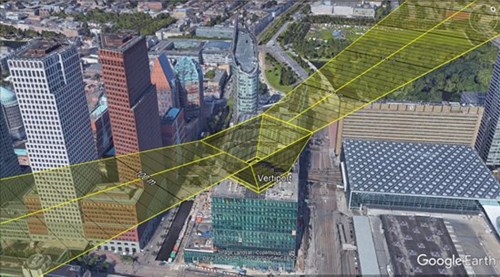_original.jpg)
There has been much published regarding the development of urban air mobility (UAM). The term refers to vehicles, often uncrewed, that may be described as flying taxis. Without a vested interest in any party, Lilium and Volocopter are two examples of UAM manufacturers. Whilst there have been announcements heralding the age of city-centre to city-centre transfers, there has been less attention given to exactly where such flights will start and end. There has been even less attention to the shape of the protected airspace that will be needed.

Mock-up of a vertiport (Source: Volocopter/Bayards)
In Europe, EASA (1) has been giving a lot of thought to the matter and has, wisely we feel, determined that the UAM vehicle will operate very much like a helicopter. Whereas we have the heliport for the helicopter, the UAM vehicle will make use of the vertiport. Using the same principles as in the helicopter world, the minimum dimensions of a vertiport are determined by the maximum overall dimension of the aircraft; its D-value. In helicopters this is usually the rear part of the tail rotor to the most forward point that the main rotor passes as it turns; in other words, the diameter that creates the smallest enclosing circle.

D-value for helicopter and UAM (Source: EASA)
Obstacle safety
The vertiport should be free of obstacles in a diverging volume protecting the vertical climb and descent section of the UAM flight. From the top of this shape, two slopes of 12.5% emerge that are essentially opposite each other. The divergent shape has a footprint of 2D (i.e. twice the D-value of the largest UAM designed to use that facility) on the ground diverging to 3D by 4D at 30 metres above the platform.
As the saying goes, a picture paints a thousand words. At To70, we have created a visualisation tool to show what these shapes look like. Whilst the yellow surfaces are the result of applying EASA’s requirements to our tool, the location is a work of fiction. We thought that the Dutch Ministry of Infrastructure and Water Management might like a vertiport on the roof of their building in the Hague.

A fictional example: vertiport take-off and landing surfaces, as per EASA guidelines, using To70’s airspace tool
Addressing environmental and infrastructure challenges
The illustration shows, to the south of the vertiport (bottom left of the image), the beginning of an area of housing. Herein lie challenges for the UAM-market; the low level at which the vehicle would pass over the houses. In this illustration, the first homes are passed over at an altitude of 102 metres or 335 feet above the ground. So noise and third-party safety are both significant issues that remain under discussion.
There is still work to be done on how much room is required for the vertiport’s infrastructure. Check-in, waiting rooms, security areas, vehicle parking are just a few of the possible elements that a vertiport might need. These need to be designed carefully before vertiports can become a reality.
For more information on UAM and vertiports, get in touch with Adrian Young (2)



.png)


.jpg)

